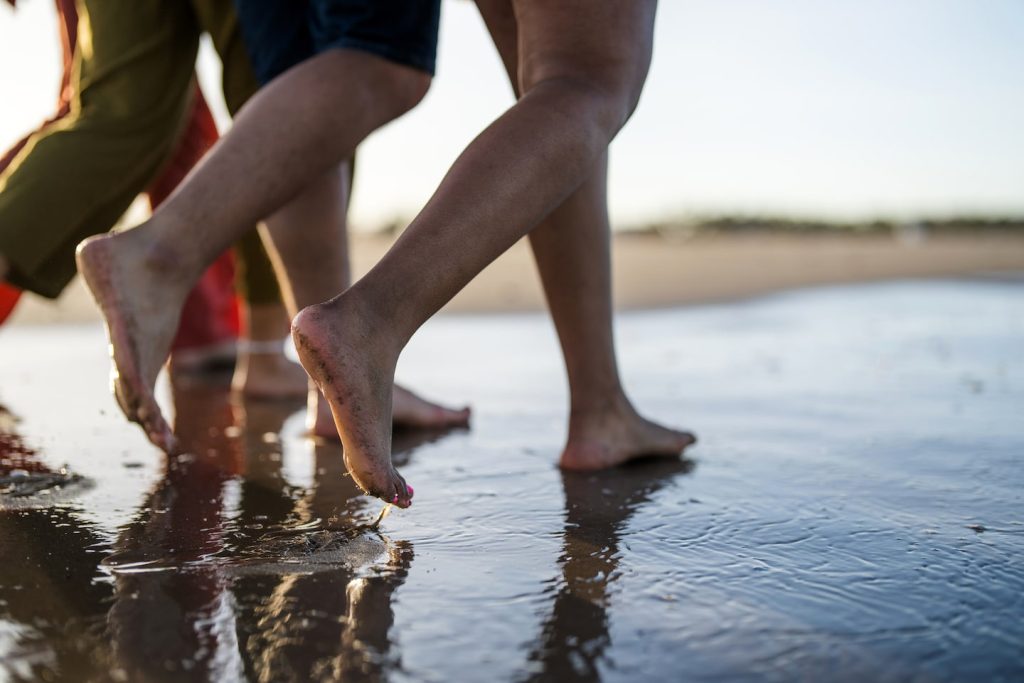Murgaitiyo, 40, a personal trainer in Clarksburg, Md., recovered after 14 days of antibiotics and a doctor’s warning that prolonged treatment could spread the infection to other parts of his body. Lesson learned: “Now I treat my toes myself,” he says.
The cuticle is a thin layer of clear, dead skin at the junction of the nail bed and skin that acts as a barrier against dirt, debris, and infectious agents such as bacteria, yeast, and fungus.
Nail salon technicians often cut or scrape the cuticles, which tears the skin and makes it easier for irritants and dangerous microorganisms to get in. As a result, experts say, an infection called paronychia can develop in your fingernails even after a manicure.
With summer approaching, it’s tempting to go barefoot, especially at the pool or beach. But experts say that’s not safe if you’ve just had a pedicure and your cuticles have been cut or trimmed.
“Avoid walking barefoot in sand,” says Adam Friedman, professor and chair of the department of dermatology at the George Washington University School of Medicine, “as tiny particles of sand can get trapped and cause irritation and inflammation, which can introduce bacteria and other microbes.” (This applies to any cut or wound, not just pedicure cuts.)
After cutting or tucking your cuticles during a pedicure or manicure, Friedman recommends applying a healing ointment like Aquaphor or Cetaphil to the area under the cuticle at the base of the nail to help prevent bacteria from getting in. “The key is to use a little bit,” Friedman says. “Don’t apply so much that it’s dripping.”
Bacterial paronychia often causes redness, swelling, and pain in the skin around the nail, and may be accompanied by a pus-like drainage, says dermatologist Olabola Awosika of Pinnacle Dermatology in Detroit. He recommends treating the infection with oral antibiotics and soaking your fingers or toes in a solution of one part vinegar to two parts water and water for 10 to 15 minutes three times a day. The solution has anti-inflammatory and antibacterial properties.
Repeated infections may also require topical steroids, she says. “Chronic recurrences can lead to complete loss of cuticle and permanent damage to the associated nail, including discoloration, nail plate detachment, and horizontal lines,” she says.
Sheldon Raps, a podiatrist in Washington, D.C., says a lot of nail damage is caused by “overzealous” nail technicians who “try to push back the cuticle and tear the skin,” and he too treats with antibiotics and at-home foot soaks (he prefers Epsom salts dissolved in warm water), done for 10 minutes twice a day for five to seven days.
“In severe cases, the nail has to be removed,” he says, which is usually done in a doctor’s office.
These infections are especially dangerous for diabetics who suffer from peripheral neuropathy, which occurs when the nerves leading to the hands and feet are damaged. You won’t feel pain in your feet from an infection, says Raps, who is also an assistant clinical professor of surgery at the George Washington University School of Medicine. “Patients usually don’t come in until it gets really bad,” he says. “You’ll either see pus or redness or smell an infection.”
If the infection spreads to the bone under the toenail and causes osteomyelitis, surgery may be needed, he says.
“The soft tissue of the toenail sits right on top of the bone,” explains Raps. “Sometimes the bone gets infected, and we surgically remove the bone. If that doesn’t work, we may have to amputate the toe. It’s rare, but it does happen. That’s why we tell people with diabetes not to get pedicures.”
How can I prevent infections from pedicures and manicures? The U.S. Centers for Disease Control and Prevention recommends the following:
- Keep nails short and cut frequently.
- When you wash your hands, scrub the undersides of your nails (the tips that stick out from the fingertips) with soap and water (or a nail brush).
- Always clean nail grooming tools before use. In commercial facilities such as nail salons, make sure technicians disinfect nail grooming tools before using them.
- The cuticle acts as a barrier to prevent infection, so do not cut or push it.
- Do not bite or chew your nails as this can lead to abrasions and infections.
- Never pick or bite a hangnail, instead cut it with clean, sterilized nail clippers that won’t damage the surrounding skin.
If your toenails are very thick or misshapen and difficult to trim yourself, skip the salon and see a podiatrist, says Friedman, “it’s a lot safer.”
Friedman wishes people would avoid pedicures and manicures completely, but recognizes that’s unrealistic. “You have to find a middle ground,” she says. “Just telling them, ‘Don’t do it,’ isn’t going to work.” Instead, she says, “make sure you go to a trusted place that sterilizes their tools. Tell them not to touch their cuticles or to clip them gently — don’t tear them.”
Awosika agrees, adding: “Always make sure your manicurist or nail technician is using clean tools and is gentle on your nails and the skin around them,” she says. “If you feel any pain or discomfort, tell them as this is not normal. If there are skin conditions associated with these procedures, patients often feel discomfort during the procedure but think it’s normal, so listen to your skin.”


